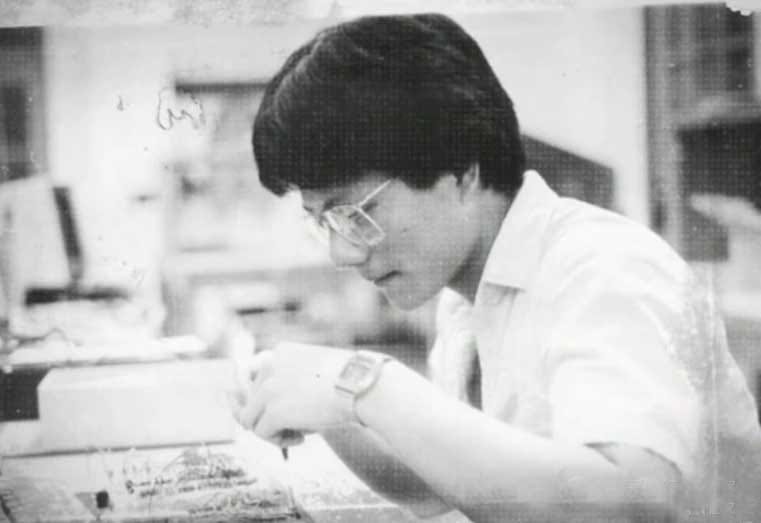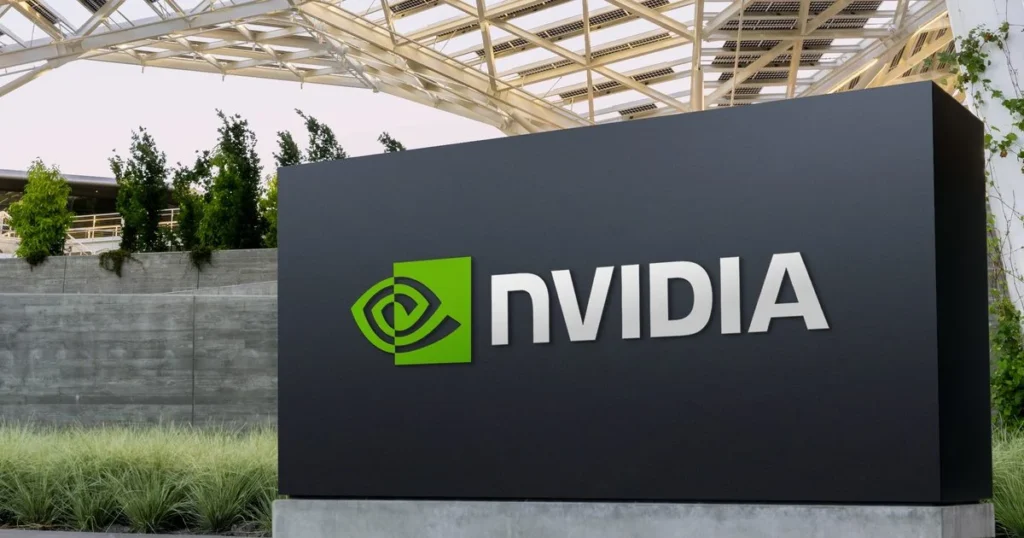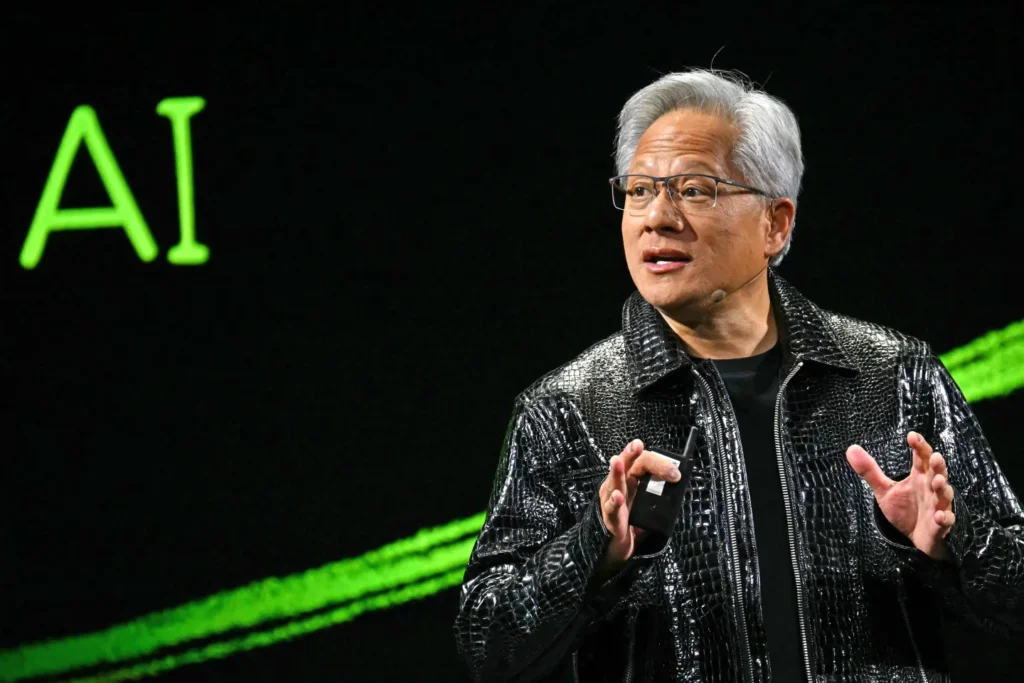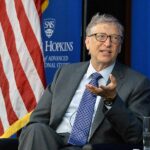Early Life and the Immigrant Mindset
Born in Taiwan, Raised for the World
Jen-Hsun “Jensen” Huang was born on February 17, 1963, in Tainan, Taiwan. At the age of nine, he and his brother were sent to the United States for better educational opportunities. They lived with relatives and later in a boarding school in Kentucky. It was a tough transition—culturally and emotionally—but one that instilled a strong work ethic and independence.
Huang would later move to Oregon, where he completed high school. Though he excelled academically, what set him apart was his curiosity and hands-on approach to learning. These early experiences as an outsider would influence his later leadership style—empathetic, persistent, and driven by purpose.

Education and Engineering Roots
Huang earned a degree in electrical engineering from Oregon State University and later a master’s degree from Stanford University. His background in chip design and computer architecture gave him a technical foundation, but he also possessed business instincts uncommon among engineers. Before founding NVIDIA, he worked at LSI Logic and Advanced Micro Devices (AMD), gaining critical industry insight and leadership experience.
Founding NVIDIA: A Bold Vision in 1993
The Three Co-Founders and a Napkin
In 1993, Huang co-founded NVIDIA with Chris Malachowsky and Curtis Priem at a Denny’s diner in East San Jose. Their vision: to create a graphics processing unit (GPU) capable of rendering lifelike 3D visuals in real time—a challenge considered nearly impossible at the time. They believed that graphical computing would redefine entertainment and scientific fields alike.
With $40,000 in startup capital and a clear mission, they launched NVIDIA, short for “invidia,” the Latin word for envy—a clever play on the company’s aspiration to be envied for its innovation.
Early Struggles and Breakthroughs
The first few years were difficult. Their initial chips failed to gain traction, and competition from Intel, ATI, and others made survival precarious. But Huang remained patient and methodical, focusing on research and hiring top talent.

In 1999, NVIDIA launched the GeForce 256, the world’s first GPU. Unlike CPUs, GPUs could process thousands of operations in parallel, making them ideal for 3D graphics. This launched NVIDIA into the spotlight, particularly in the gaming world.
The company went public the same year, and Huang became one of the youngest CEOs to lead a publicly traded semiconductor firm.
Redefining the GPU and Betting on AI
Gaming to Deep Learning
While NVIDIA dominated the graphics card market throughout the 2000s, Huang had a deeper vision. He believed that GPUs could go beyond gaming and become central to AI, data science, and high-performance computing.
In 2006, NVIDIA launched CUDA (Compute Unified Device Architecture), allowing developers to program GPUs for general-purpose computing. It was a revolutionary step that turned GPUs into engines for AI training, simulation, and data processing.
Though CUDA’s adoption was slow at first, it laid the groundwork for AI breakthroughs. When deep learning started gaining momentum around 2012, researchers flocked to NVIDIA’s GPUs as the only hardware powerful and flexible enough to support large-scale model training.
Powering the AI Revolution
By the mid-2010s, every major AI advancement—from image recognition to large language models—was being powered by NVIDIA GPUs. AI pioneers like Geoffrey Hinton, Yann LeCun, and Andrew Ng became vocal supporters of GPU-based training.
Today, NVIDIA is the backbone of AI infrastructure. From autonomous vehicles and robotics to ChatGPT and drug discovery, NVIDIA hardware and software are powering innovation across sectors.

Data Centers, Supercomputing, and Beyond
NVIDIA in the Enterprise
Under Huang’s leadership, NVIDIA expanded aggressively into the data center space. Products like NVIDIA DGX systems, Tensor Cores, and A100/A200 chips became standard for AI workloads. Partnerships with AWS, Google Cloud, Microsoft Azure, and Meta reinforced NVIDIA’s dominance in the AI infrastructure market.
In 2020, Huang announced the NVIDIA Omniverse, a real-time simulation and collaboration platform that aims to build the industrial metaverse—enabling companies to simulate factories, cities, and environments with photorealistic accuracy.
Acquisitions and Ambitions
NVIDIA acquired Mellanox Technologies in 2019 for $6.9 billion, strengthening its position in high-speed networking. It later attempted to acquire Arm Holdings for $40 billion—a deal that was ultimately blocked by regulators but highlighted NVIDIA’s ambition to become a central player in global computing.
Leadership Style and Culture
The Anti-Celebrity CEO
Unlike many Silicon Valley figures, Huang avoids the celebrity spotlight. He’s known for his humble demeanor, leather jacket style, and hands-on leadership. He gives product demos himself, engages directly with engineers, and attends developer conferences like GTC (GPU Technology Conference) to communicate NVIDIA’s vision.
Leading with Conviction
Huang is admired for his long-term thinking. CUDA took a decade to prove successful, and yet he never wavered. His ability to stay the course—through failed products, market downturns, and missed deals—has earned him credibility as one of the most consistent tech leaders of his generation.
Focus on Talent and Excellence
Huang emphasizes hiring world-class engineers and giving them autonomy. He fosters a culture of innovation, pushing teams to work on “impossible” problems. His belief in technical excellence has kept NVIDIA ahead in an industry where obsolescence is measured in months.
Philanthropy and Personal Life
Education and Giving Back
Jensen Huang has donated generously to education and research institutions. In 2022, he donated $50 million to Oregon State University to build a supercomputing research facility. He has also contributed to Stanford, his alma mater, and various AI and healthcare initiatives.
He frequently speaks about the responsibility of tech leaders to invest in the future—not just for innovation, but for social good.
Family and Privacy
Huang is married to Lori, whom he met while studying at Oregon State. They have two children and maintain a relatively private lifestyle. Despite his success, Huang often attributes his achievements to perseverance rather than genius.

As Huang once said:
“Life is about creating things that bring joy to people… and doing it with people you love working with.”
Life and Business Lessons from Jensen Huang
1. Build for the Long Term
Huang spent over a decade investing in CUDA before it paid off. His conviction in long-term bets is a model for entrepreneurs and CEOs who are often pressured to deliver short-term results.
2. Stay Technical, Stay Involved
As CEO, Huang remains deeply involved in product development. His technical literacy allows him to lead effectively in an industry that evolves rapidly. Founders should stay close to the technology.
3. Timing is Key, But So is Preparation
NVIDIA was ready for the AI boom because Huang had prepared the infrastructure years in advance. His story shows that success is often when preparation meets opportunity.
4. Culture Matters
NVIDIA’s culture of curiosity, excellence, and autonomy stems from Huang’s leadership. He prioritizes people who are passionate about solving hard problems—and gives them room to succeed.
5. Adapt or Die
NVIDIA went from gaming to AI to enterprise. Huang has continually evolved the company’s mission without losing focus. Agility is a survival trait for modern businesses.
6. Humility Scales
Huang’s quiet confidence, grounded personality, and customer-first mentality have earned him industry-wide respect. Humility, coupled with excellence, is a rare but powerful combination.
Jensen Huang’s journey from a Taiwanese immigrant to a global tech titan is one of foresight, resilience, and precision. He didn’t chase trends—he created the architecture that would enable them. Under his leadership, NVIDIA became not just a chip company, but a platform powering the next era of human advancement.
In a world chasing fast exits and viral fame, Huang built slowly, methodically, and with purpose. His story is a beacon for founders, engineers, and technologists aiming to make a lasting impact.




